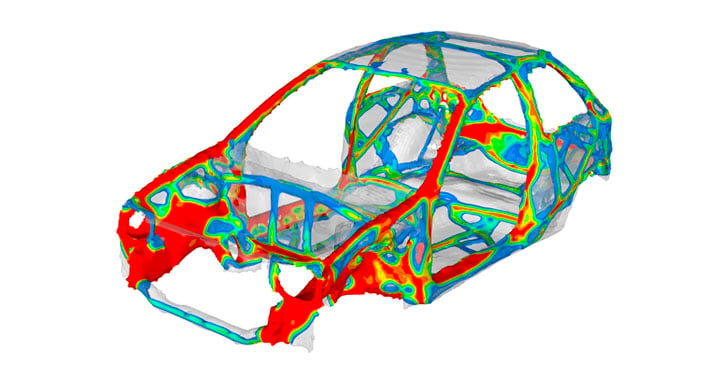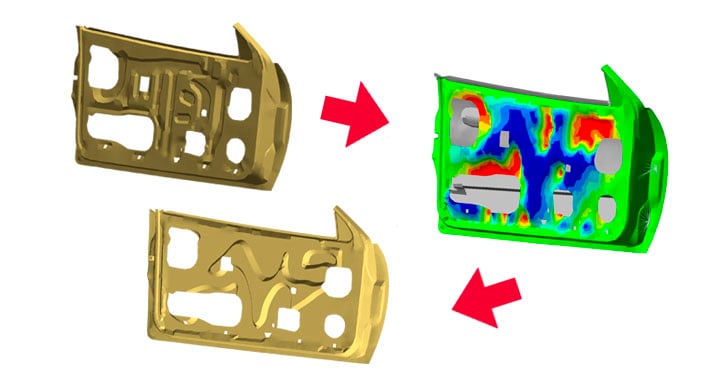
Designing a mechanical part requires much more than simply the geometric shape; other factors must be analyzed and accounted for, and that requires powerful software.
Producing 3D printsd parts for prototyping often means multiple iterations of the design, all seeking the ultimate design that will go to manufacturing.
Being analyzed in those prototyping iterations are a number of factors beyond the mere shape of the part. Multiple dimensions of analysis are required to ensure a part will perform in its intended environment. There may be thermal analysis, for example, to demonstrate the part will operate correctly in various operating temperatures. There could be a stress analysis to ensure the part doesn’t break down when expected forces arrive. You might want to ensure the minimum amount of material is used to reduce weight or materials cost.
For complex objects such analysis is very challenging and requires the use of software. While such tools are increasingly being embedded within the high-priced power CAD tools, they may not always be handy when you’re using lesser CAD packages.

That’s where you might want to add in a standalone structural analysis tool. One of them is Altair’s OptiStruct.
This tool performs simulations on the part to test a variety of physical properties. Some of the analysis categories include:
- Stiffness, Strength and Stability
- Noise and Vibrations
- Powertrain Durability
- Heat Transfer Analysis
- Kinematics and Dynamics
- Structural Optimization
Depending on the needs of the design, you can select any of these analyses to refine the part design.
Pricing for OptiStruct is based on the number of CPU cores you’ll be using for calculations. One Altair’s site they’ve priced an annual license at USD$18 per core. So, for example, the three year cost of using the tool on an 8-core machine would be about USD$5,000. The license is floating as well, so that you can share it among different workstations – and designers.
The pricing is more than would be justified for hobby use, but it’s also less than the pricing for other more expensive options. I believe Altair’s strategy here is to target those small manufacturers that cannot afford the big tools, yet still require a structural analysis solution.

